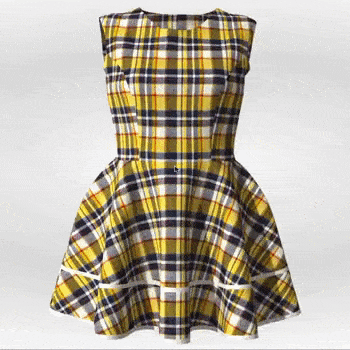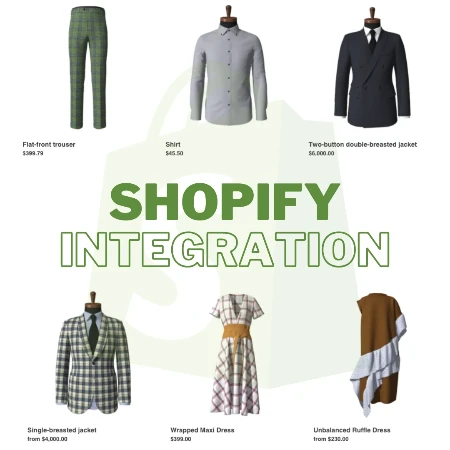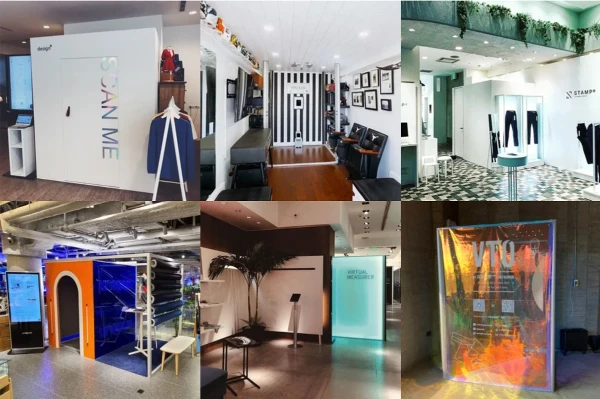The future of fashion has arrived faster than we could ever imagine. In 2020, people started talking about technology like digital and 3D. Also, more and more brands have embraced the 3D design workflow in a short period of time. We understand that 3D/ digital transformation can be costly, time-consuming and risky. However, from all the data we’ve collected online and our observations, we have to say that a 3D solution is inevitable for the future of fashion. Here we’ve broken it down for you, showing the data.
What kind of 3D technologies can be used in the fashion industry?
When talking about 3D technologies, it might include, 3D scanning, 3D visualization, 3D modeling, 3D printing and so on. Each of the applications can be used in fashion.
A 3D body scanner can be used in scanning consumers’ bodies for acquiring body measurements. These can be used for size recommendation and sizing prediction. A fabric scanner is the perfect tool to create digital fabric swatches, while 3D modeling software can create garments or accessories in 3D to conduct virtual samping and preview the designs before production. 3D visualization software can replace product images and provide an interactive and immersive experience to consumers. This means they view variants of the design and even customize their desired styles. It has the ability to zoom in, zoom out and review the product in 360 degrees.

3D visualization has especially become a huge thing since during lockdowns, people must be at home and shop online. Your e-commerce website and the product images are the major factors that will dominate their decision making process. The following data on the impact of the 3D application might surprise you.
Why 3D?
Research back in 2018 showed that the interactivity of the 3D product, the new way to display information, and the improved product accuracy can help fashion brands to display products online better. (Zhou, 2018) Taking one of the largest luxury goods department stores in Eastern Europe, TSUM, as an example, after they replaced their product image with 3D images, the conversion rate increased by almost 40 percent for products in the shoes and bags categories.
When German car manufacturer teamed up with Zerolight, a 3D specialist, to render their vehicles in 3D they found that in an initial pilot there was an increase of 66% in user engagement, and user satisfaction also rose along a range of KPIs. They also found that with the live 3D representation of the vehicle being fully configurable, customers added an average of 9% in additional features to their basket.
In studies by Shopify on online consumer preferences, we find this data: only 0.52% of shoppers want to see a single product photo, 33.16% prefer to see multiple photos; and the majority of them, exactly 58.03%, prefer photographs that will enable them to have a 360º vision of the product.
It seems that a 3D view is almost irresistible to consumers. When the cloud-based platform Cappasity performed market research in 3D imaging, 82% of responders activated the 3D view, and 95% said they preferred it to a video.
Now that so many more people are shopping online, customers are becoming ever more choosy. If they feel they can’t exactly imagine a product, or fear they may have to send it back as it’s not what they were expecting, they turn away.
Brands with a 3D converter installed on their website have seen a 30% increase in conversion and a 50% reduction in returns, when they use interactive 3D visuals. According to the Harris Poll, 60% of shoppers are looking for the AR and 3D experience, and they are even willing to pay up to 20% more for it.
The interaction and engagement offered by 360 & 3D product imagery increases that average time on site by 32%. Companies that allow their customers to become involved in the online shopping experience see an average increase in customer satisfaction by up to 50%, which builds positive engagements and brand loyalty.
Why should you choose TG3D Studio’s 3D solutions for your fashion eCommerce?
1. 100% mapped back to your actual products
TG3D Studio’s 3D solutions for fashion start from digitizing your garment with real patterns and fabrics through our 3D fashion design software and fabric scanner. Unlike other 3D solutions that create a hand sculpted 3D model based on product images, creating the garment from your actual patterns and fabrics will ensure the size, dimension, color and texture of the garments in 3D will look exactly the same as the actual garments.
Projects by Ching.patternmaker
2. Suitable for either advance or basic users
We provide an end-to-end solution from 3D creation to website integration. For advanced 3D users, you may create your own 3D garments from our 3D fashion design software and utilize our APIs to connect the 3D assets to your website, internal order management, CRM, PLM system, etc.
For basic 3D users, we can customize your products into 3D and we also offer an easy web integration guide with Shopify Shop. See our sample shop here: TG3D Studio's Sample Shopify Shop
Shopify Integration Annoucement
3. Seamless connection for a coherent Omnichannel experience
Our 3D solutions also help you connect to your offline retail stores. All the 3D online experience can easily be implemented to your brick and mortar stores through our iPad app. You may learn more about how 3D technologies can be utilized in brick and mortar stores in our previous blog post: The Post COVID-19 Retail Apocalypse - How Can Shops Survive? You may also see one of our client cases of using 3D technologies to transform its business here: How Facha Transformed Its Bespoke Suit Business with 3D Body Scanning
Scanatic™ 360 Body Scanner In Stores
Contact us to learn more about how we can help!



